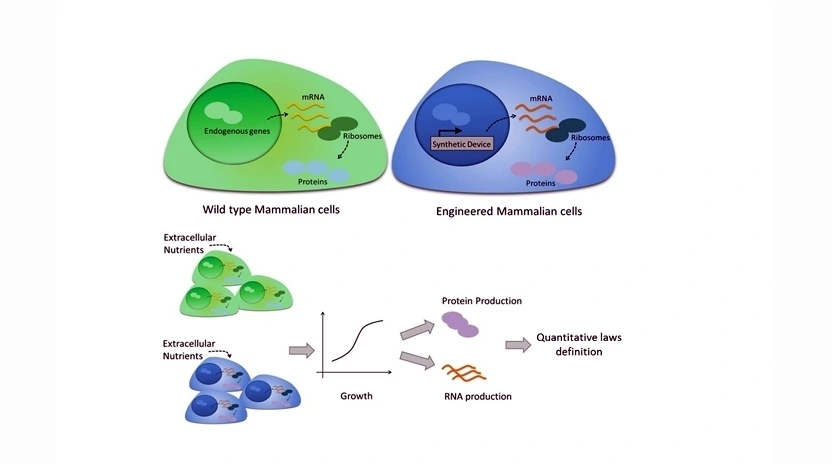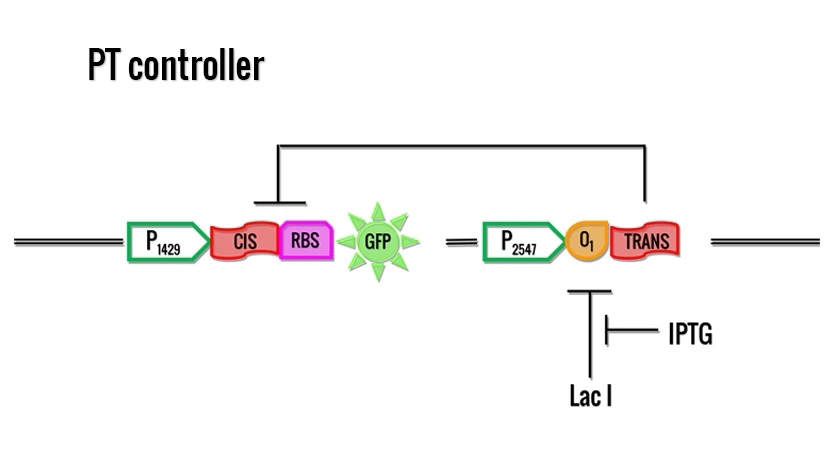Synthetic Biology

- Details
- Contributed by Francesca Ceroni
Mammalian cells are important tools for bioprocessing applications and for investigating the mechanisms of cancer development. Although a close relation has been observed in these systems between cellular growth and the production of intracellular resources needed for transcription and translation, quantitative empirical relations are still lacking. Investigating the links among cell ...
- Details
- Published in Synthetic Biology

- Details
- Contributed by Emanuele Giordano
The stochasticity due to the infrequent collisions among low copy-number molecules within the crowded cellular compartment is a feature of living systems. Single cell variability in gene expression within an isogenic population (i.e. biological noise) is usually described as the sum of two independent components: intrinsic and extrinsic stochasticity. Intrinsic stochasticity arises from the ...
- Details
- Published in Synthetic Biology

- Details
- Contributed by Emanuele Giordano
Most of synthetic circuits developed have been designed by an ad hoc approach, using a small number of components (i.e. LacI, TetR) and a trial and error strategy. We are at the point where an increasing number of modular, inter-changeable and well-characterized components is needed to expand the construction of synthetic devices and to allow a rational approach to the design. The use of ...
- Details
- Published in Synthetic Biology

- Details
- Contributed by Emanuele Giordano
Post-transcriptional regulation allows a faster control of gene expression, which might result relevant in the design of synthetic gene circuits. However, synthetic biologists are warned to give the proper consideration to functional modularity of biological parts and the need for a case-to-case characterization of their function, raising concern about the use of a overconfident bottom-up ...
- Details
- Published in Synthetic Biology